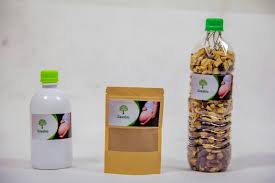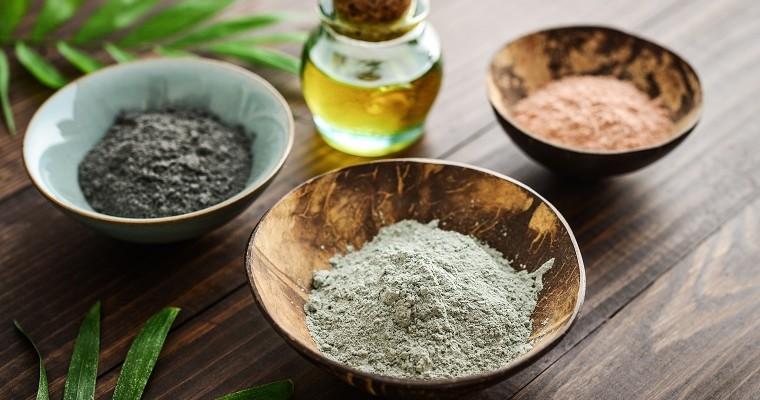Green clay and large fibroids: free recipe

Uterine fibroids are growths in your uterus. They are generally not dangerous, but they can cause pain, heavy bleeding, and fertility or pregnancy problems. There are two types of treatments, and medications can help manage the symptoms of uterine fibroids.
What are Uterine Fibroids?

The uterine fibroids are growths that develop on the lining of your uterus. They are also known as lemiomas or fibroids. They can be as small as a pea or larger than a grapefruit. You may have multiple fibroids or just one. Uterine fibroids can grow slowly over several years or grow rapidly.
Uterine fibroids are almost never cancerous and do not increase your chances of getting other types of cancer. Still, they can cause pelvic pain, heavy bleeding during your period, bleeding between periods, back pain, and in some cases, infertility or miscarriage. However, many people with fibroids do not have any symptoms.
NATURAL TREATMENT TO CURE FIBROMES
Curing uterine fibroids with a natural remedy made entirely from plants is possible.
The natural treatment that we offer you to permanently cure uterine fibroids consists of herbal teas. This remedy has proven its effectiveness with dozens of resolved cases. It is specially designed for patients who do not want to have surgery. This is one of the best natural remedies for curing fibroids .
One of the advantages we offer you is that the results of our treatment are lasting. Trust us ! This remedy is the secret to natural cure of fibroids by plants .

Contact us for Phone / whatsapp / +229 99 54 64 63
Health tips and natural remedies to atrophy the size of fibroids: green clay

- Apply green clay poultices (found in the form of a preparation in a tube) on the pelvic area. Repeat once or twice a day, for months if necessary, to decongest the small pelvis, thereby reducing pain and possibly reducing the size of the fibroid.
- Consult an osteopath preferably practicing gynecological osteopathy to improve the balance of the small pelvis.
- Avoid all sports that can make pelvic congestion worse: tennis, jogging, skipping, etc.
- Do not wear shoes with high heels.
Who is at risk for uterine fibroids?
Uterine fibroids are quite common. These can occur at any age, but you are more likely to get them as you get older. They are more common in people between the ages of 30 and 40. Fibroids usually shrink after menopause.
You have a higher risk of developing uterine fibroids if:
- You have family members with fibroids (especially your mother)
- You are an obese person
- You eat a lot of red meat
- You are not getting enough vitamin D
Black women get fibroids more regularly. Research also shows that fibroids generally grow at a younger age, grow faster and bigger, and cause more severe symptoms in black women.
What causes uterine fibroids to grow?
No one really knows what causes uterine fibroids. Genetics, hormones, diet, stress or a combination of several factors can play a role.
Fibroids are probably controlled by hormones, such as estrogen and progesterone. These develop when hormone levels are high (such as during pregnancy) and stop growing or decrease when people use anti-hormonal drugs or go through menopause.
What are the symptoms of uterine fibroids?
Uterine fibroids don't always cause symptoms, but if you have them, they can include:
- Longer and more abundant periods
- Bleeding between periods
- Anemia (from losing too much blood during your period)
- Pain in the stomach or lower back
- Pain during intercourse
- A feeling of fullness in the lower abdomen (called pelvic pressure)
- Swelling of the uterus or stomach
- Urinating too much or having difficulty urinating
- Constipation or pain when pooping
- Spontaneous abortion
- Problems during childbirth, such as increased chances of having a cesarean
- Infertility (this is rare and can often be treated)
The size of your fibroids is not related to the severity of your symptoms. Even small fibroids can cause problems.
How do I know if I have uterine fibroids?
Most people with fibroids don't know they have them unless they are showing symptoms.
Your nurse or doctor may find fibroids during a normal pelvic exam. They will check your uterus, placing gloved fingers inside your vagina and pressing lightly on your stomach. They may be able to smell fibroids. or your uterus appears larger than normal or is a different shape.
Your doctor may also do other types of tests to see if you have fibroids. It can use ultrasound, X-ray, MRI, CT scan, or other types of imaging technology to take a picture of the inside of your body.
You may need a minor surgery, called a hysteroscopy or laparoscope, to find fibroids. The doctor inserts a small camera into your body through your vagina or a small incision in or near your belly button to view your uterus and other organs.